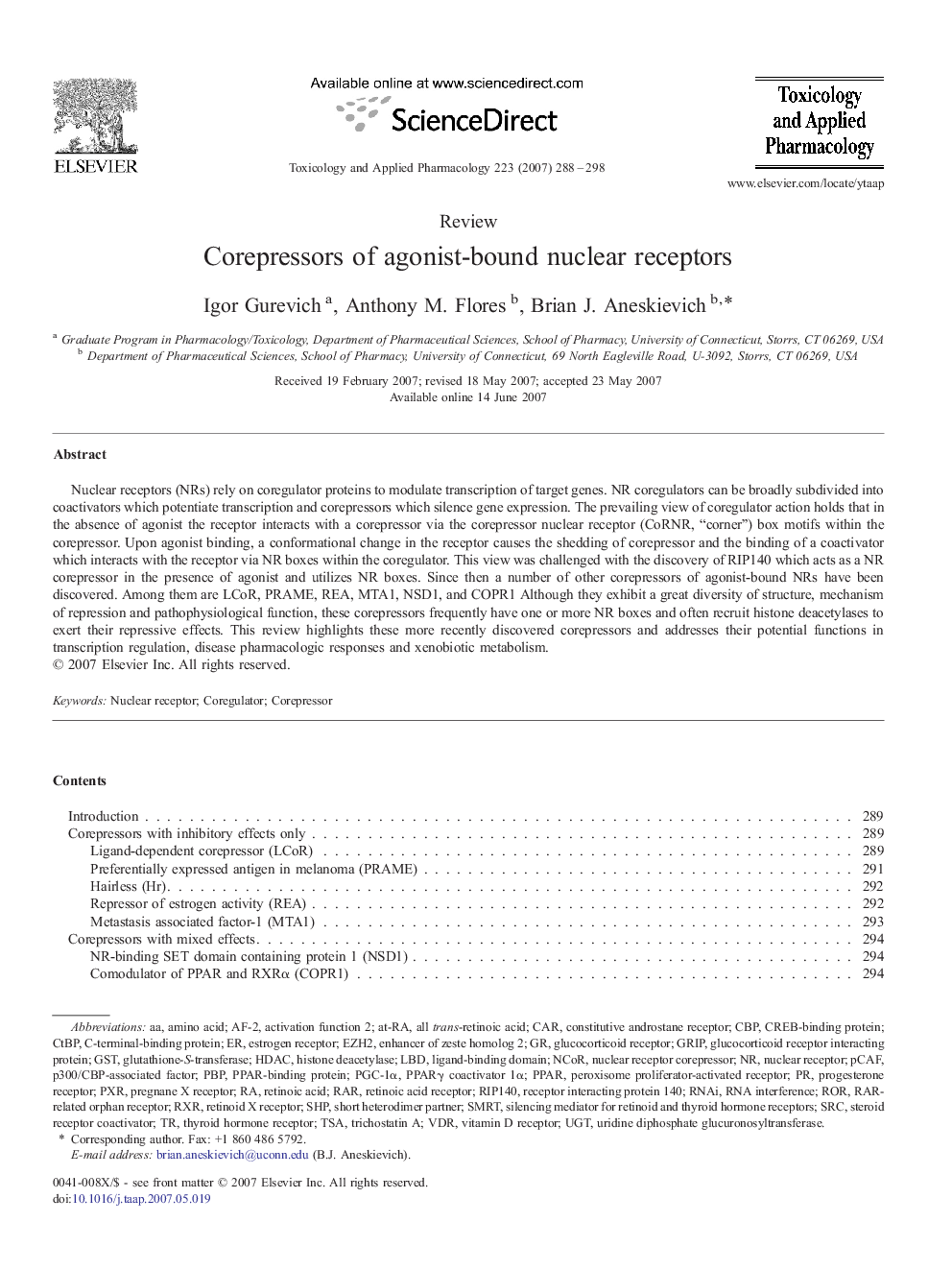| Article ID | Journal | Published Year | Pages | File Type |
|---|---|---|---|---|
| 2570753 | Toxicology and Applied Pharmacology | 2007 | 11 Pages |
Nuclear receptors (NRs) rely on coregulator proteins to modulate transcription of target genes. NR coregulators can be broadly subdivided into coactivators which potentiate transcription and corepressors which silence gene expression. The prevailing view of coregulator action holds that in the absence of agonist the receptor interacts with a corepressor via the corepressor nuclear receptor (CoRNR, “corner”) box motifs within the corepressor. Upon agonist binding, a conformational change in the receptor causes the shedding of corepressor and the binding of a coactivator which interacts with the receptor via NR boxes within the coregulator. This view was challenged with the discovery of RIP140 which acts as a NR corepressor in the presence of agonist and utilizes NR boxes. Since then a number of other corepressors of agonist-bound NRs have been discovered. Among them are LCoR, PRAME, REA, MTA1, NSD1, and COPR1 Although they exhibit a great diversity of structure, mechanism of repression and pathophysiological function, these corepressors frequently have one or more NR boxes and often recruit histone deacetylases to exert their repressive effects. This review highlights these more recently discovered corepressors and addresses their potential functions in transcription regulation, disease pharmacologic responses and xenobiotic metabolism.
